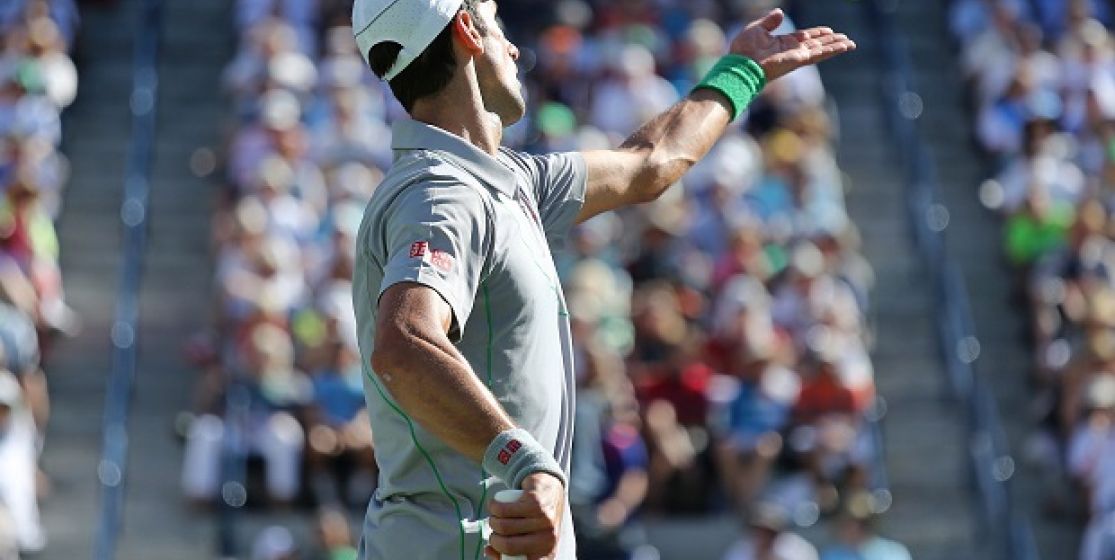Following the poor ratings of the US Open final between Marin Cilic and Kei Nishikori, the president of the International Tennis Federation, Francesco Ricci Bitti, suggested to only allow one serve. So we decided to help him and thought about other propositions - more or less bizarre - to maximize the audiences of the matches. If you ban the second serve, you could also get rid of them...
…The half-minute recovery between two points. "Twenty or twenty-five seconds, I don't care. I can hit four aces in twenty seconds." That is Goran Ivanisevic's answer in the debate that has been shaking the tennis planet regularly for the past two years, to determine if the time off granted to players between two points is too generous (according to the broadcasters, they break the rhythm of the game) or not enough (according to Rafael Nadal and Novak Djokovic in particular). Let us therefore rule in favour of the recent US Open champion’s coach, Marin Cilic, and ban any extended downtime by allowing only ten seconds of rest for the players. No more obsessive compulsions, no more asking for two towels or taking three hours to choose what is the best ball for the following serve: when the point is finished the next one starts right after... As it was the case before "Rafa" and the "Djoker" started to change the rules of the game. And too bad if those two are not happy. They will have to learn to shorten their points to keep their strength. After all, even in ten seconds, Goran Ivanisevic can hit two aces.
…The changes of sides The television innovation has backfired. Changes of sides are a creation of American television in the 1980s, eager to expand commercial breaks during the matches. Except that a minute and thirty seconds of ads every two games, it's also an invitation to channel-hop... or to turn off the TV. So back to the pre-CBS (highly symbolic, when the American media, also the instigator of the Super Saturday at the US Open, disengaged from tennis this year), when because of a lack of real break between games, tennis players used to take ten minutes to breathe at the end of each set - the equivalent of half time in football or a time off after the second period in many other sports. There won’t necessarily be less advertisements on the screen, but they won't break the game as they used to.
…The long rallies Why would servers always suffer from all the changes to the game? Biggest losers of tennis developments in the last decade, they have earned the right to be left in peace. For once, it would hit another tennis, the winning one, by prohibiting, purely and simply the endless rallies from the baseline, which are the daily lot of the current champions. How? By installing a countdown on a giant screen at the edge of the court, with a buzzer: if, after twenty seconds of play, or fifteen ball touches (times are negotiable), the server still hasn't made the difference, the point will go to the receiver. Not only televisions will be delighted to see shorter matches, but the directors of indoor tournaments will applaud with both hands, them who must juggle with schedules that can regularly end around midnight ... When the next round begins at 11 am the next day morning.
…The surprise factor To paraphrase Forrest Gump, the thing about a surprise, is that you can never know what you are going get. We could also add that the general public doesn't like the glorious uncertainty of sport and tends to seek the safe bet. So to keep the crowds happy and make sure that they remain loyal, why not returning to the good old days of the Challenge Round, when the defending champion was automatically qualified for the finals? To ensure that a Nadal, Federer or Djokovic remains on the courts until the last day, here's something that would win the loyalty of the public. Or even better: to decree that Roger Federer has to be automatically qualified for all finals. If you want good audiences, you might as well make sure that the most popular player is on the courts. And at 33, the Swiss has never been so popular around the world, and the trend is only getting bigger as he approaches the inevitable retirement. So why not take full advantage of the star as long as he still makes the show!
...The calculation of the points. Or at least change it, by adorning it, as in figure skating, of a "compulsory exercise." In each set, to show the extent of his skills and talent, the player would have to complete an number of predefined moves: performing at least one ace, try at least one serve-and-volley, return one, hit at least one drop shot, try to catch the opponent off balance once, and manage at least once a 360 overhead like Gael Monfils...
The penalty for a player who would have won a set without ticking all the boxes: having to listen to Martina Navratilova and Tracy Austin commenting the US Open for a Three hours straight.






